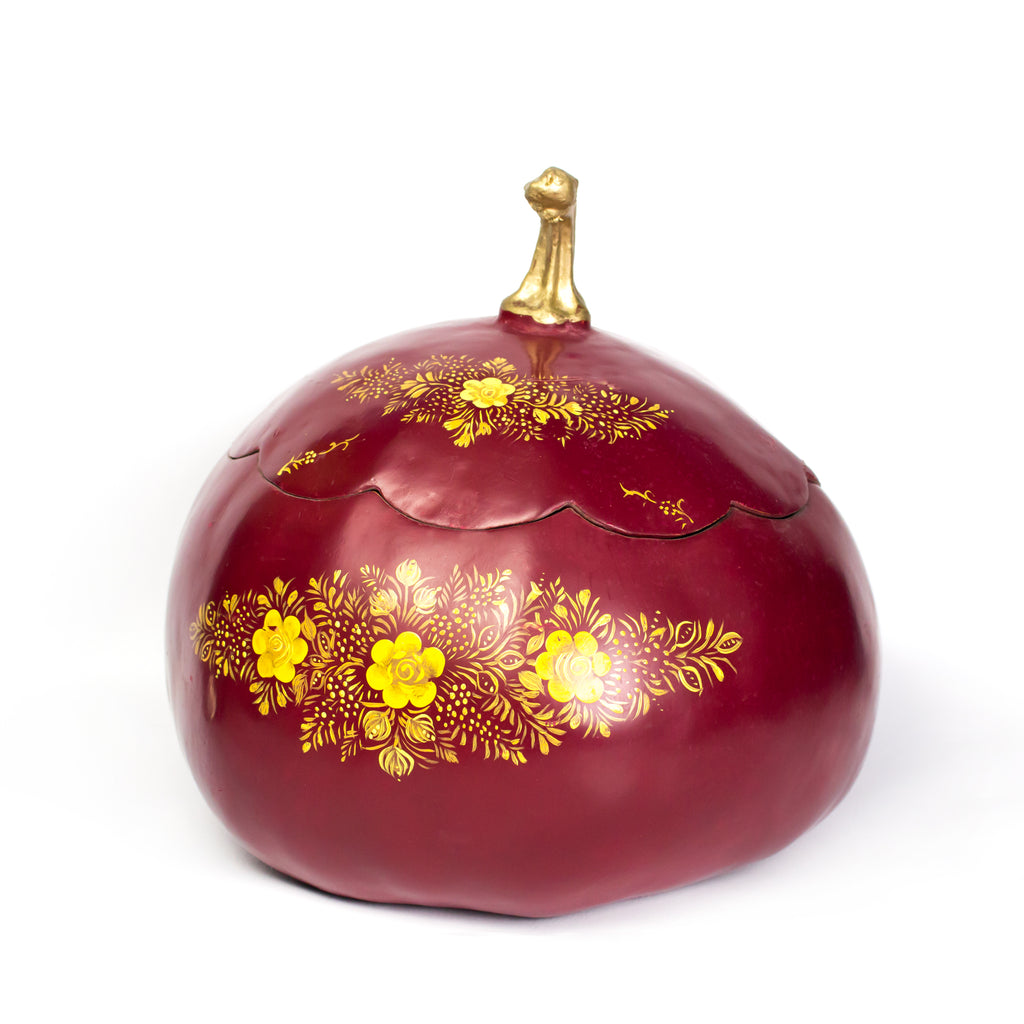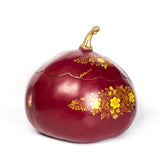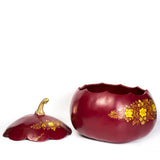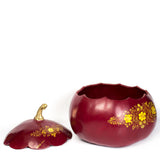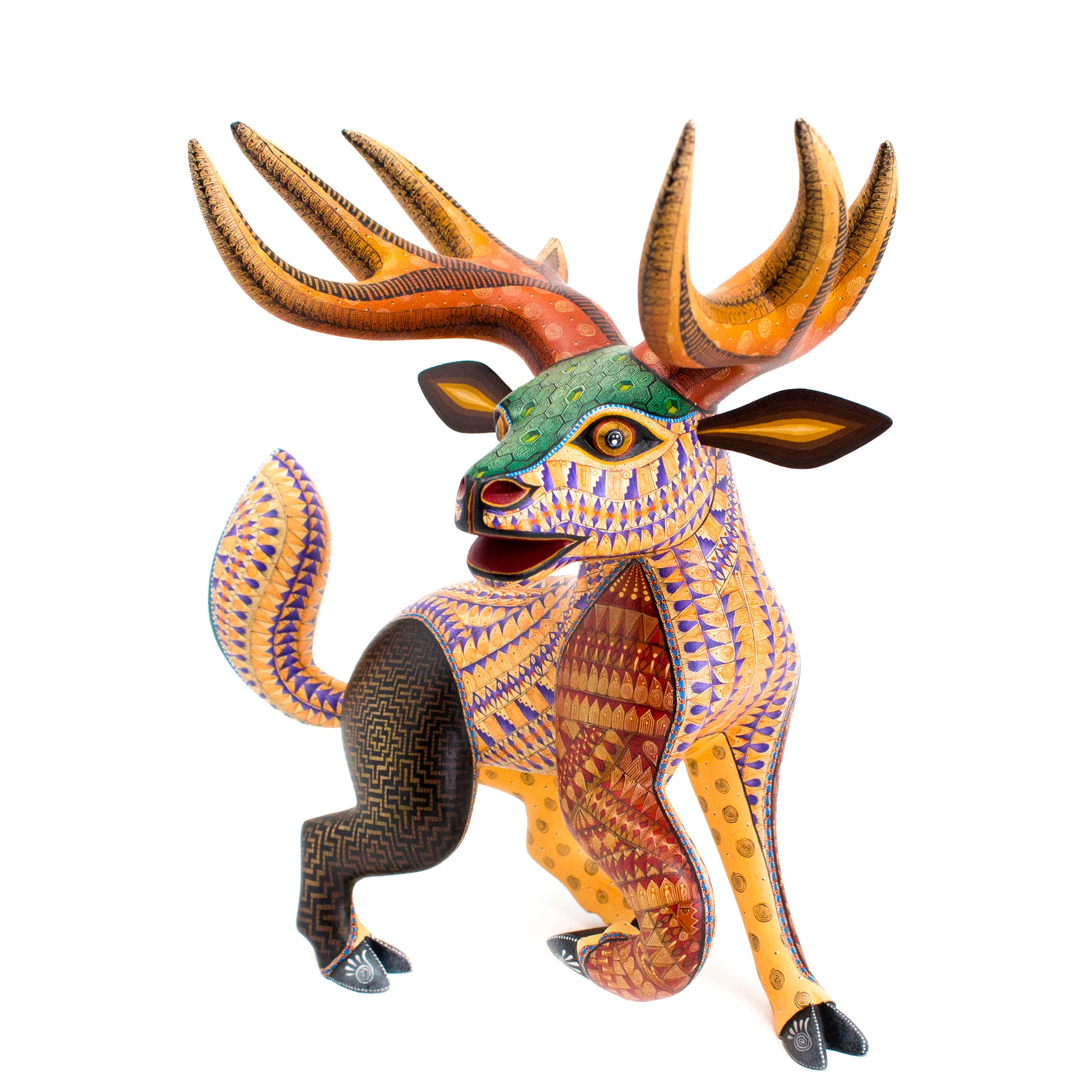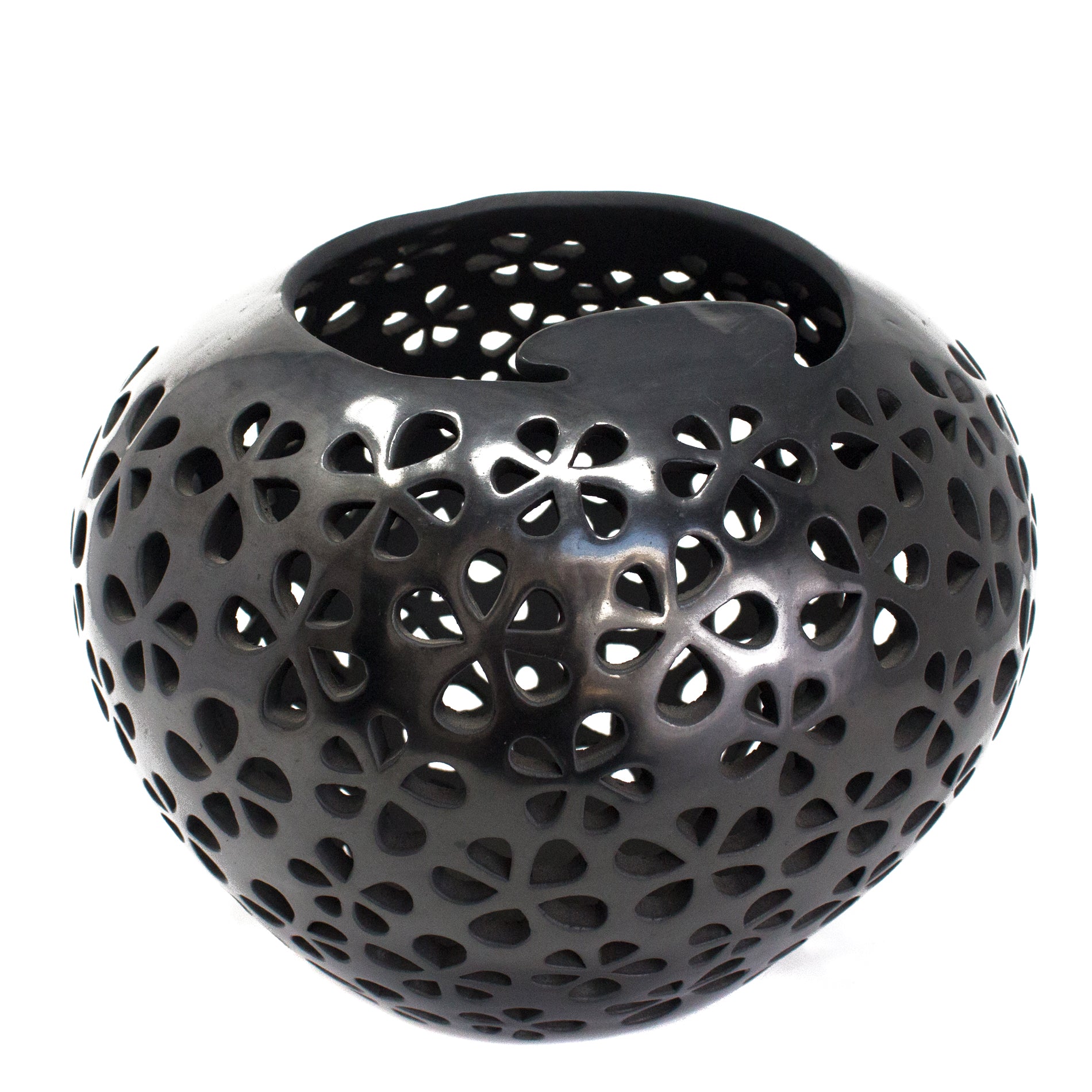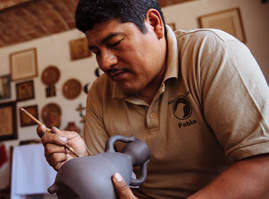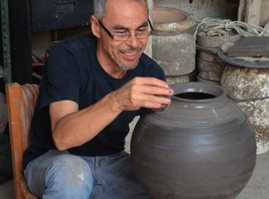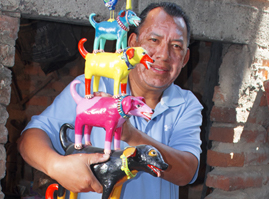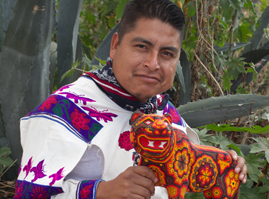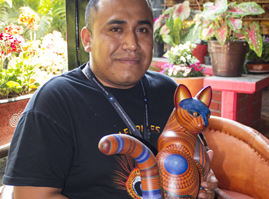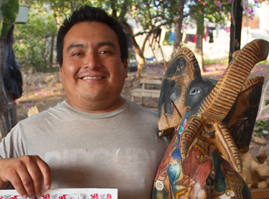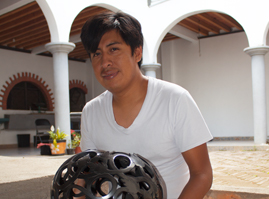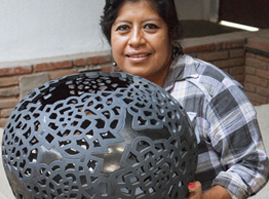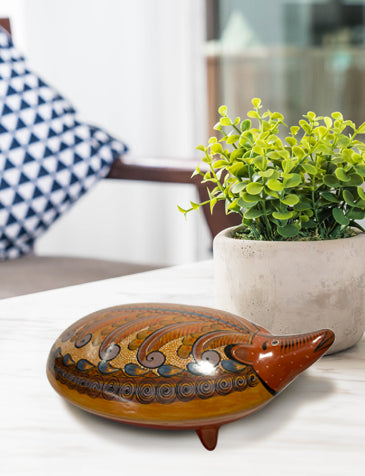Large Red Tole with Golden Flowers, Laca
- Sold By: Graciela Diaz Perez
- Type: Laca
With its deep burgundy base, bright yellow flower pattern and captivating golden stem, this amazing Tole has every point it can get for catching your eye and appreciating the skill put into it! Heightening and seizing the true potential of beautiful woods, transforming them into inspiring works of art, the Graciela Diaz Perez Laca pieces are art you can enjoy every day.
Details:
This piece is currently not in stock. Once your order is processed, the artisan will receive an order to produce a replica of the item you ordered. Given the handcrafted and artistic nature of their pieces, your purchase may have some variation in color and shape. It is these same variations that make every item unique.
Elaboration times range from 20-30 days.
Measurements:
11.02" high x 11.42" diameter
Weight:
2.65 lbs
Chiapa de Corzo, is a place in the State of Chiapas, commonly known by their fine and high quality Lacquer piece skills, in which the artisans aply a very special technique. The soil used in the application of their traditional lacquer, is called “Tizate” (A natural carbonate compound derived from Magnesium and Calcium).
Then “Axe”, an oil naturally obtained from “cochinillas”, small insects that live mostly in Prairie Acacia trees. During the month of July, they are harvested from these trees, and the oil preparation begins by boiling cochinillas with water, then, the hot liquid is sifted with fine cloths, and then, this sifted liquid is boiled again, right until it evaporates all remaining water, leaving only a butter-like oil with a bright yellow color.
Tizate is then ground into the Axe, and the artisans thoroughly mix them until they obtain a paste called “Zulaque”, which is used to fill and cover imperfections on the dried pumpkins (also known as Jícaras), as well as other wooden pieces. Bitter dried pumpkins are opened with a saw, giving it the shape intended for the piece, seeds are removed from the inside, and the body of the pumpkin is left soaking for 3 days, all before letting it dry for around 3 to 4 days. Once dried, the pumpkin’s body is then sanded both inside and out, using both the Axe and Tizate, the base for the piece is applied into 2 layers, usually called “capas”, the process can require the piece to have a total of 7 “capas” applied to it. The last layer is applied with cotton and rubbed until it becomes very bright and shiny. When the artisans are crafting a colorful piece, they will start applying pigment which is added to the soil and being applied to the piece, alternating both soil and oil, until the shine resembles that of the iconic black pieces they also craft.
The decoration of the pieces is applied once they are dry, using their fingertips and small cats-hair brushes. The artisans impregnate their fingertips with the color pastes, and start forming the background colors for the flowers and their petals, after that, a cats-hair brush is used to make the detail and fine lines that embellish these pieces with extra shapes, flowers and borders.
Among the most representative pieces made by these artisans, are pieces such as “Jicpestles”, Sewing Cases, Jewelry Cases, Folding Screens, Fruit Trays, and several other decorative items.

Graciela Diaz Perez
Joining their efforts, Graciela Diaz Perez and her Husband Florencio, have been producing some of the most renown lacquer pieces. Gabriela started learning when she was very young. Her mother and her aunt introduced her to the technique, and her pieces have received praise in several forums and competitions.
Graciela’s house has an inspiring location, right on top of a hill with a full view to the rest of the city, the perfect place to work and produce some of the finest pieces, starting from the traditional pigments themselves, all surrounded by amazing and eye-catching creations, ongoing projects and colorful ornaments that are being worked on.
Her skill shines the brightest when she goes deep into her work, gracefully applying the pigments with her fingers and minutely tracing the lines around her pieces with a cats-hair brush, one can easily recognize why Graciela’s work has been so widely praised, awarded and recognized, almost on a yearly basis since 2001!

